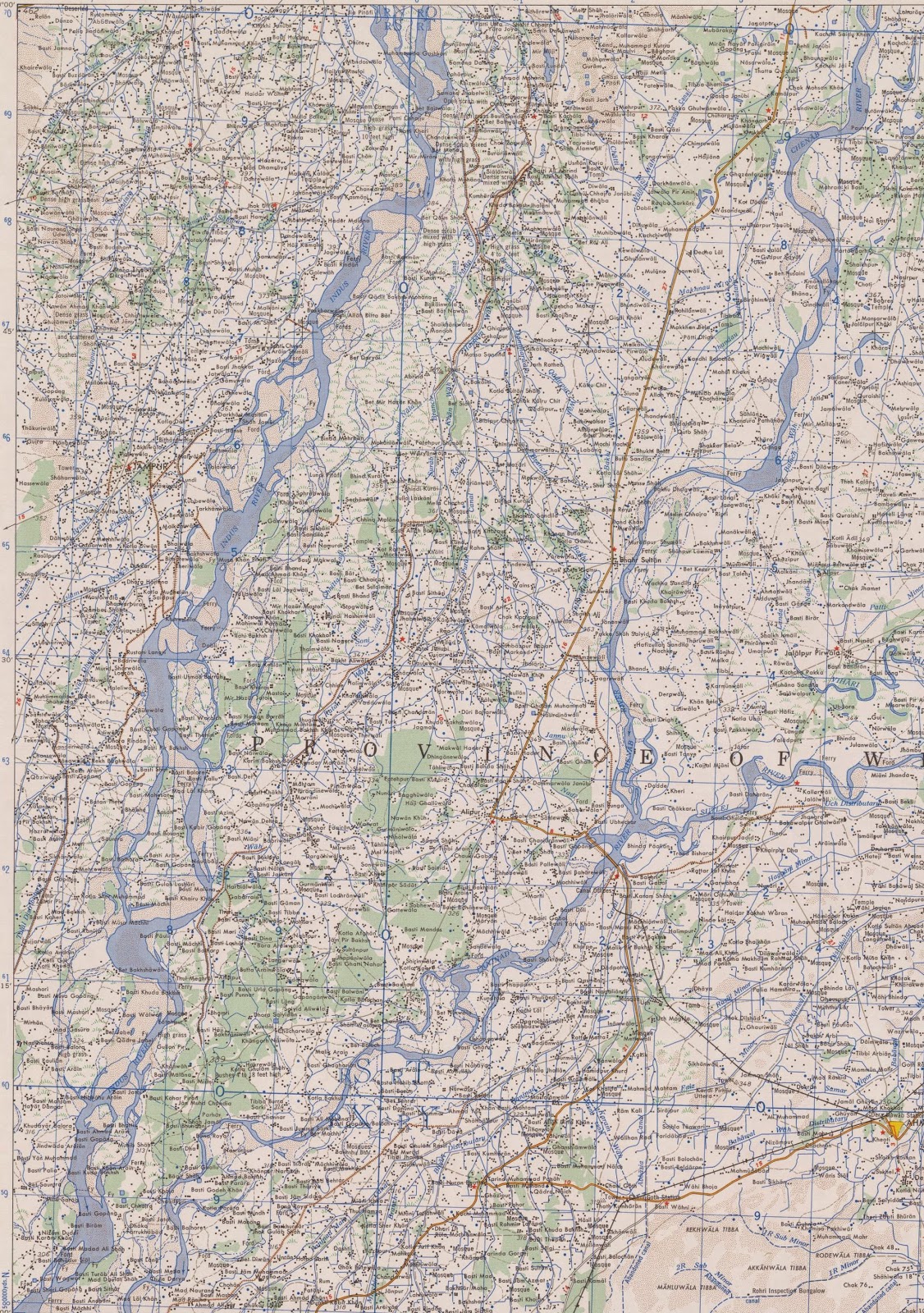I've started to make a first attempt at detailing the Mssúma river. My personnal opinion is that, in character, it would be much like the Indus, Ganges and Brahmaputra rivers that flow through India, Pakistan and Bangladesh. I believe that the background material describes it as wide and slow moving, and filled with the yellow silt. We know that at least part of the region is subject to monsoon like rains so I am assuming that the rivers of the region are subject to floods and that their paths probably change over time as the river cuts a new path.
If you examine the maps of the India, Pakistan and Bangladesh region that I linked to in my previous post you will see that the cartographers have noted that the rivers are subject to change. They also seem to indicate the typical "high water" boundaries of the rivers, though again that could potentially vary from year to year. My intent is to draw my version of the Mssúma river in the same manner.
A couple of things need to be decided upon. For example, width. I have traced the approximate centerline of the river as it appears on the Swords & Glory map. I did this as far north as Avánthar so far. I stopped because I had forgotten which branch was the Mssúma river. It seems that the right-hand branch is the river but I haven't gone back and added that bit. When I do I will be able to estimate the length of the river and compare it with real world examples.
The first thing I did was to offset the centerline on each side in one kilometer increments. This was so that I could get an idea of the river at various widths. I think I stopped at 5 kilometers total. You can see how it compares to the width of the line used to describe the river on the original map.
Then I used an AutoCAD tool called a spline to draw a curved line to represent a first attempt at each river bank. The intent is to add to this or modify as seems appropriate, adding or removing curves or changing the character so that it resembles the Indus river I showed in my last post. I am going to allow the original line to offer hints as to where islands and lakes might be located. Or perhaps allow it to indicate the extent of the river in a normal flood year.
This clip shown above shows the river in the region of Metlán and Jáyo, two small cities I invented. It just seemed to me likely that where the Sakbé road crossed the river there would be some sort of human habitation. I haven't done much to expand my initial descriptions of the cities but you can find my first stab at it here.
This next picture shows Tsolyánu with a rectangular grid overlaid on it. Each grid rectangle is 200 kilometers by 150 kilometers and is sized so that it will fit on a typical B1 drawing sheet at 1:250,000 scale with plenty of room for a title block and key. I centered the grid around the immediate area about Jakálla and then expanded it from there.
I'll also be adding the smaller tributary rivers and streams not shown on the larger map. Of course, I'll be making all that up as I'm pretty sure the Professor didn't provide any information that detailed. If you go back and look at that Mssúma river watershed picture from my last post you might notice that I have added distributary rivers at its mouth. My thinking is that as the river path has changed over time it is more likely to have run through the area of the Flats of Tsechélnu than it is the higher ground to the east of the river (in green on the map). I think it must resemble a situation somewhat similar (though on a smaller scale) to the Mouths of the Ganges. This can be found in detail on the maps I linked to last time.























